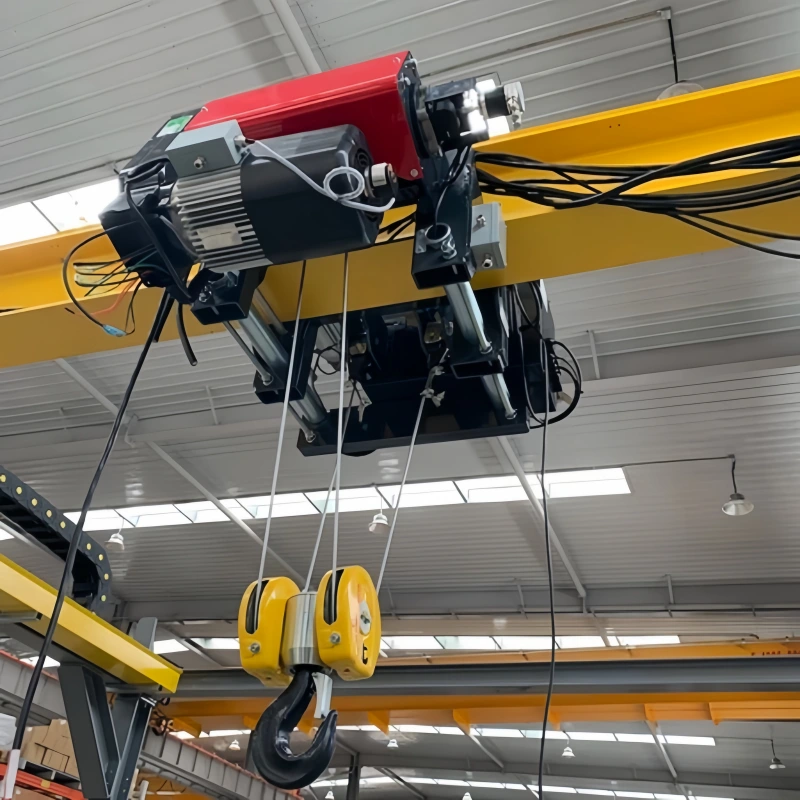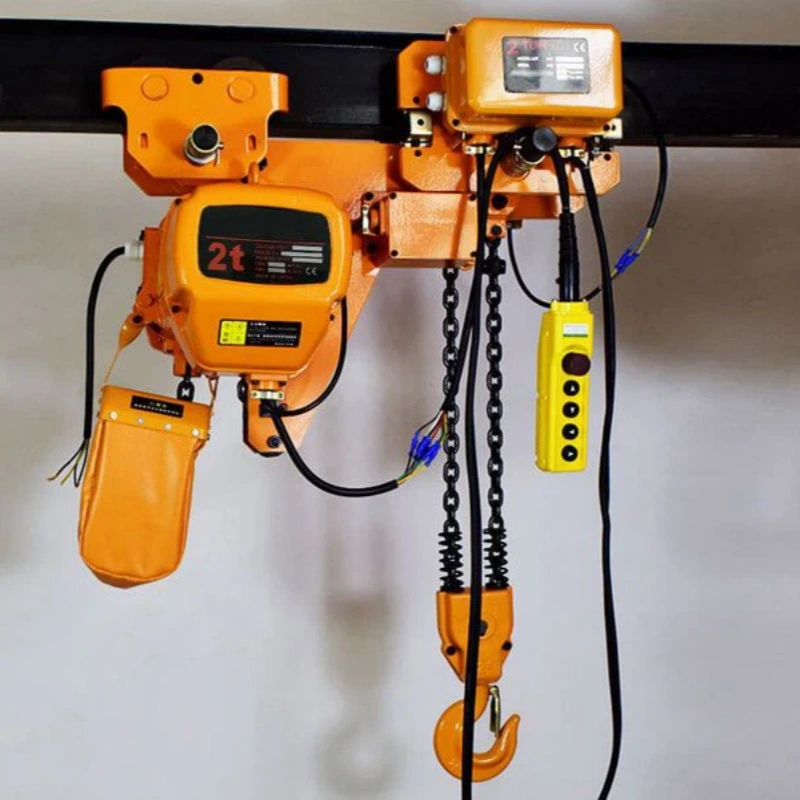You rely on connecting links to create secure connections in rigging and lifting operations. These essential components join chains, hooks, and other hardware, making your load handling safe and efficient.
When you select the right connecting link, you reduce the chance of accidents and equipment failure. Strong, well-made links help you move heavy loads with confidence and protect everyone on the job site.
Key Takeaways
Connecting links are essential for safe and efficient rigging and lifting operations. They join chains, hooks, and hardware, reducing the risk of accidents.
Different types of connecting links, like Hammerlock, Quick, Clevis, C-Shaped, and Master links, serve specific purposes. Choose the right type based on your load and application.
Always ensure your connecting links meet international safety standards. This guarantees strength and reliability, protecting your team and equipment.
Regular inspection and maintenance of connecting links are crucial. Check for wear and damage before each use to prevent accidents and ensure safety.
Investing in high-quality connecting links saves money in the long run. Durable links reduce repair costs and downtime, keeping your operations running smoothly.
Types Of Connecting Links
You will find several main types of connecting links in industrial rigging and lifting systems. Each type serves a specific purpose and offers unique advantages for different tasks. Here are the most common types you will encounter:
Hammerlock Links
Quick Links
Clevis Links
C-Shaped Links
Master Links
Let’s look at each type and see how you can use them in your daily operations.
Hammerlock
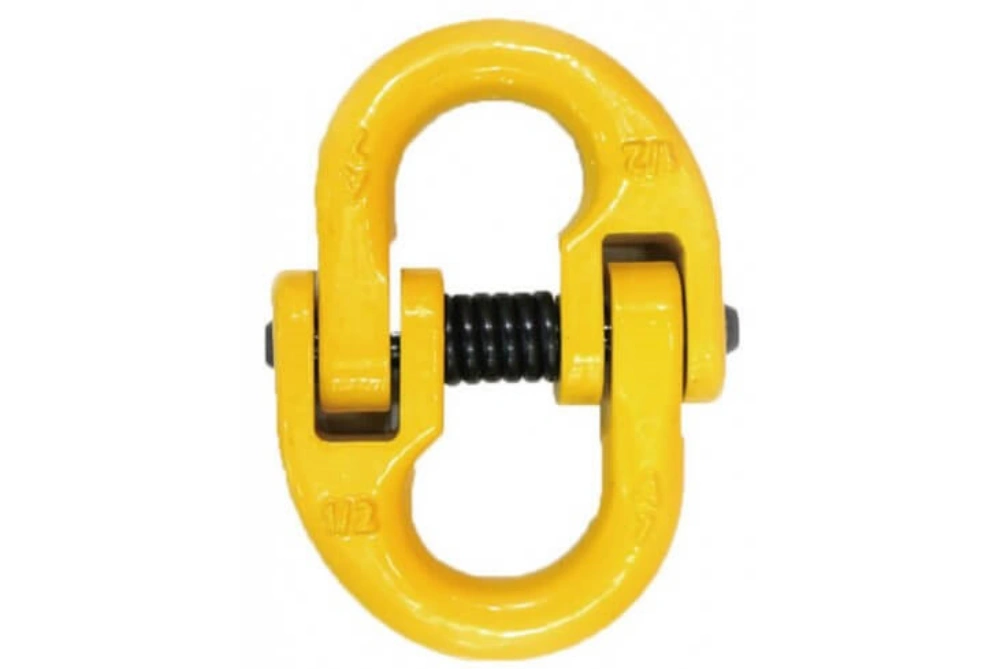
Hammerlock connecting links give you a secure way to join chains, hooks, or other fittings. You often use them in heavy-duty applications because they handle high loads and resist wear. You can assemble or disassemble a hammerlock link quickly with just a hammer and a punch.
This makes them ideal when you need to attach chains to master links or hooks, or when you want to create new branches in a sling. Powerful Machinery’s G80 and G100 Links include hammerlock designs that meet strict international standards. These links deliver the strength and reliability you need for demanding rigging jobs.
Quick
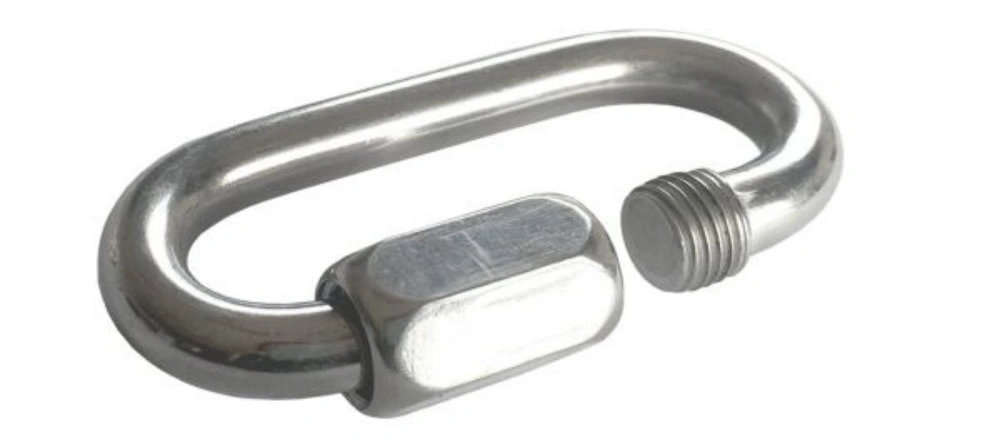
Quick links offer you a fast and easy way to make temporary connections. You simply twist the threaded sleeve open, insert your chain or fitting, and close it again. Quick links work best for light to medium-duty applications where you need flexibility.
You might use them for connecting accessories, securing loads, or making adjustments on the fly. Their simple design saves you time during setup and breakdown. While quick links are not meant for the heaviest loads, they remain a valuable part of your rigging hardware toolkit.
Clevis
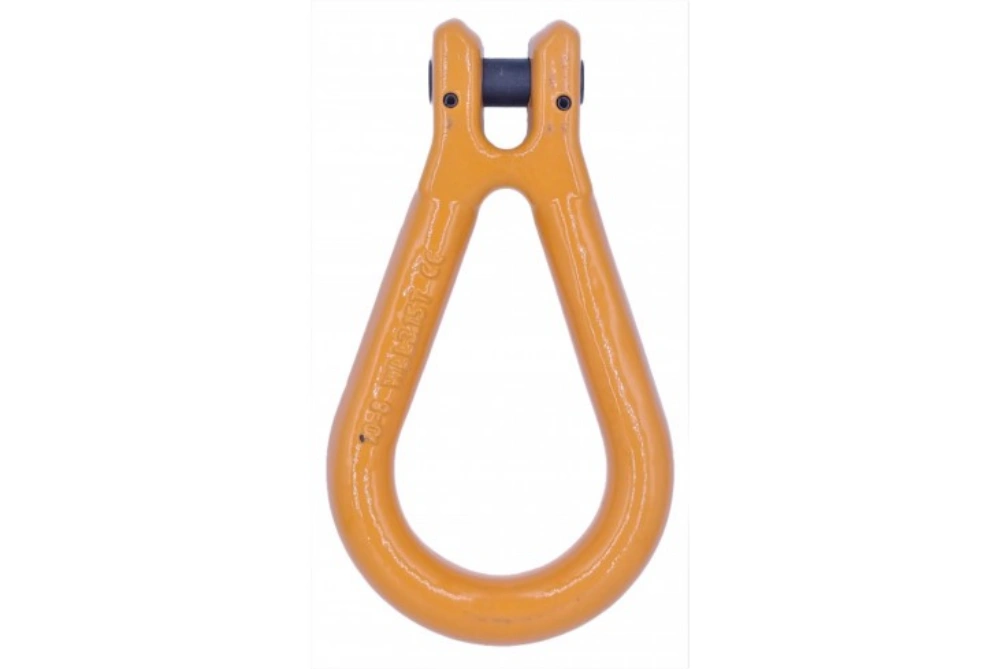
Clevis connecting links help you install and remove chains or fittings with ease. You use a pin to secure the connection, which allows for quick changes in the field. Clevis links fit many rigging tasks, from attaching hooks to connecting slings.
Their design lets you swap out components without special tools. When you choose a clevis link from Powerful Machinery’s G80 or G100 series, you get a product built for strength and long service life.
C-Shaped
C-shaped connecting links give you a reliable way to join smaller chains, especially in light-duty applications. Their open shape makes them easy to use when you need to connect or disconnect quickly.
You might use C-shaped links for hanging signs, securing tarps, or joining small hardware. While they do not handle the same heavy loads as other types, they fill an important role in many everyday tasks.
Master
Master links serve as the main connection point for multiple chain legs in a sling assembly. You use them to gather several chains into one strong link, which then attaches to a crane hook or lifting device.
Master links must handle high loads and resist bending or breaking. Powerful Machinery’s G80 and G100 master links are engineered for these tough jobs. They meet both European and US standards, so you can trust them in critical lifting operations.
European And US Standards
You need to know that connecting links must meet strict international standards to ensure safety and performance. These standards set the requirements for strength, elongation, and testing. G80 and G100 links from Powerful Machinery comply with these rules, giving you peace of mind on every job.
Tip: Always check that your connecting links meet the standards required for your industry.
Here is a quick overview of the main standards:
Standard | Governing Body |
|---|---|
ASTM | American Society of Testing & Materials |
ASME | American Society of Mechanical Engineers |
OSHA | Occupational Safety & Health Administration |
Chain grades, such as G80 and G100, indicate the ultimate breaking strength of the connecting links. ASTM requires that alloy chains elongate at least 20% before breaking. This ensures that your rigging hardware provides a warning before failure, adding an extra layer of safety.
When you choose Powerful Machinery’s G80 and G100 connecting links, you get products that meet or exceed these international standards. You can rely on them for heavy-duty lifting, secure connections, and long-lasting performance in any environment.
Benefits Of Connecting Links
Versatility
You can use connecting links in many different industries. These links help you adapt to changing needs on the job. You might use them in construction, manufacturing, or logistics.
Their design lets you connect chains, hooks, or slings in many ways. This flexibility helps you reach operational excellence and meet unique targets in your field.
You can reduce downtime and keep your equipment running.
You can support lean workflows and smooth production cycles.
You can adjust your setup quickly to fit new tasks.
Ease Of Use
Connecting links makes your work easier. You can attach or remove them without special tools. Their simple design saves you time and effort.
Ergonomic features reduce fatigue and lower the risk of injuries.
Easy attachment improves both safety and efficiency.
You can match the right link to your hoist or chain, making sure each part fits well.
Durability
You want equipment that lasts. Connecting links use strong materials and careful engineering. They resist wear, impact, and harsh conditions. This means you spend less time on repairs and replacements. You can trust these links to hold up under heavy loads and tough environments.
Safety
Your safety matters most. Connecting links helps you spot hazards before they cause harm. Many industry reports show that real-time monitoring and alerts improve your response to dangerous situations.
You can collect data to highlight risky areas.
You can act fast when you see a problem.
You help build a culture where everyone looks out for each other.
Cost-Effectiveness
You save money when you use connecting links. Their long life and easy maintenance lower your costs. You avoid expensive downtime and keep your team working. Preventive maintenance becomes easier, so you can stop problems before they grow.
Note: When you choose high-quality connecting links, you invest in both performance and safety for your team.
Applications
Connecting links play a vital role in many industries. You see them in action wherever strong, reliable connections are needed. Let’s look at how you use these components in different applications.
Construction
You use connecting links every day on construction sites. They help you assemble lifting slings, secure loads, and connect chains to cranes or hoists. G80 and G100 Links from Powerful Machinery give you the strength and safety you need for heavy lifting.
These links meet strict standards, so you can trust them in demanding construction environments.
Marine
In marine applications, connecting links must stand up to harsh conditions. You need links that resist corrosion and moisture. The table below shows what you should look for in marine environments:
Requirement | Description |
|---|---|
Waterproof and Moisture-Resistant | Prevents corrosion and damage from high humidity and saltwater. |
Corrosion-Resistant | Uses materials like stainless steel to withstand seawater. |
Mechanical Stability | Handles vibrations and impacts during navigation. |
Electrical Performance | Maintains stable connections and prevents voltage drops. |
Powerful Machinery’s G100 Links offer excellent corrosion resistance and durability, making them ideal for marine use.
Manufacturing
Connecting links to keep your manufacturing lines moving. These links let you join and separate roller chains in heavy machinery. This function is crucial for forming continuous loops in chain assemblies.
You find them in material handling, packaging, and road-building equipment. When you choose certified links, you ensure your machines run smoothly and safely.
Logistics
In logistics, you need fast and secure ways to connect and disconnect loads. Connecting links help you attach chains, hooks, and slings to cargo. You can quickly adjust your setup to match different shipping needs. Powerful Machinery supplies certified links that keep your operations efficient and reliable.
Mining
Mining applications demand the toughest connecting links. You need high-strength alloy steel and precise manufacturing. The table below outlines key requirements for mining:
Requirement | Description |
|---|---|
Material | High-strength alloy steel with the right alloying elements. |
Manufacturing Process | Forging and heat treatment for strength and wear resistance. |
Dimensional Accuracy | Proper fit with conveyor chains to avoid uneven force. |
Surface Quality | Smooth surfaces to prevent cracks. |
Quality Certifications | Meets strict industry standards. |
G80 and G100 Links from Powerful Machinery meet these needs, giving you confidence in harsh mining environments.
Rigging And Lifting
You depend on connecting links for safe rigging and lifting operations. G80 Links provide standard strength and durability. G100 Links deliver 25% more strength and higher working load limits.
You get enhanced safety features and excellent corrosion resistance. These links work well in construction, marine, mining, and other heavy-duty lifting applications.
Note: Always choose certified connecting links for your most demanding applications. Powerful Machinery’s products help you meet safety and performance goals across every industry.
Materials
Alloy Steel
You need strong materials to trust your connecting links in tough jobs. Alloy steel is the top choice for most heavy-duty applications. This steel contains special elements like chromium and molybdenum. These elements boost the steel’s strength and toughness.
You get connecting links that can handle high loads without bending or breaking. Powerful Machinery uses advanced alloy steel, including 35CrMo, in its G80 and G100 Links. This steel offers high static strength and impact toughness. You can rely on these links even when you face extreme conditions.
Tip: Always check the steel grade before you choose connecting links for lifting or rigging.
Strength And Durability
You want connecting links that last. The mechanical properties of alloy steel make this possible. Yield strength for high-strength steel usually reaches up to 52 ksi (355 MPa), and some modern links go up to 67 ksi (460 MPa).
If the yield strength is more than 0.8 times the ultimate strength, the design yield stress is limited to 0.8Fu. These numbers show how much force your connecting links can handle before they deform.
35CrMo steel stands out because it keeps its strength and toughness, even at high temperatures. You get links that resist fatigue and wear, so you spend less time on repairs.
Property | Description |
|---|---|
Yield Strength | Up to 67 ksi (460 MPa) |
Impact Toughness | High resistance to shocks |
Fatigue Limit | Withstands repeated loads |
Corrosion Resistance
You work in environments where moisture and chemicals can damage your equipment. Corrosion resistance matters for connecting links. Powerful Machinery treats its G80 and G100 Links with powder coating and advanced surface treatments.
These steps protect the steel from rust and wear. You get links that last longer and stay safe, even in marine or mining settings. When you choose links with strong corrosion resistance, you protect your investment and keep your team safe.
Note: Proper maintenance and inspection help you extend the life of your connecting links.
Selection And Safety
Choosing The Right Link
Selecting the right connecting links is essential for safe and efficient rigging and lifting operations. You should always match the link to your specific job requirements. Consider these important steps when making your choice:
Determine the Load Weight
Always know the exact weight of the load you plan to lift. Never estimate or guess.Count the Sling Legs
Identify if you are using a single-leg, two-leg, three-leg, or four-leg sling. The number of legs affects the load each connecting link must handle.Measure the Sling Angle
Check the angle between each sling leg and the vertical. Smaller angles are safer because they reduce tension on the connecting links.Apply the Load Factor Multiplier
Use the formula:Tension = Load / (Number of legs * cos(θ))
where θ is the angle from vertical. This calculation helps you understand the real force on each link.Select the Master Link
Make sure the working load limit (WLL) of your master link is equal to or greater than the total calculated load, including the effect of the sling angle.
Tip: Always check the material and grade of your connecting links. High-quality links made from quenched and tempered alloy steel, like those from Powerful Machinery, offer superior strength and toughness.
The heat treatment process increases hardness and ductility, allowing the link to stretch and provide a warning before failure.
Installation And Inspection
Proper installation and regular inspection keep your rigging safe and reliable. You should follow a structured process every time you use connecting links.
Establishing a rigorous inspection protocol is key. Inspections should never be random. Follow a documented process based on standards like ASME B30.26. A strong inspection program includes three levels: Initial Inspection, Frequent (Pre-Use) Inspection, and Periodic Inspection.
Initial Inspection:
Check every new connecting link before first use. Look for cracks, deformities, or manufacturing defects.Frequent (Pre-Use) Inspection:
Inspect connecting links before each use. Make sure there are no signs of wear, corrosion, or damage.Periodic Inspection:
Schedule regular, detailed inspections. Document the results and replace any links that show signs of fatigue or excessive wear.
Note: Always install connecting links according to the manufacturer’s instructions. Make sure all components fit together securely. Never force a link into place.
Maintenance
You can extend the life of your connecting links with simple maintenance routines. Clean your links after each use to remove dirt, moisture, and chemicals. Store them in a dry, protected area to prevent rust. Lubricate moving parts if needed, especially for links with pins or threaded sleeves.
Inspect for wear, cracks, or deformation.
Replace any connecting links that show signs of damage.
Keep a maintenance log to track inspections and replacements.
Alert: Never overload your connecting links. Overloading can cause sudden collapse, dropped loads, severe injuries, or costly damage.
Quality Assurance
You should always choose connecting links from trusted manufacturers who follow strict quality standards. Powerful Machinery ensures every product meets or exceeds international safety requirements.
The company uses premium alloy steel and advanced heat treatment for durability and load-bearing safety. Each link receives a powder-coated or galvanized finish for superior corrosion resistance.
Product Type | Grade | Compliance Details |
|---|---|---|
G80 U.S. Type Connecting Link | G80 | Manufactured to Grade 80 standards, ensuring top-tier strength and reliability. |
G80 European Type Connecting Link | G80 | High-strength lifting grade for heavy-duty applications, heat-treated for safety. |
Powerful Machinery’s connecting links carry certifications from organizations like ISO, TUV Rheinland, and OSHA. These certifications give you confidence that your rigging and lifting equipment will perform safely in any environment.
Tip: Always look for certification marks and documentation when purchasing connecting links. Certified products help you meet your safety goals and protect your team.
Conclusion
You play a key role in keeping your team safe by choosing the right connecting links. Regular inspections help you spot wear or damage early. If you find any defects, remove the link from service right away.
Chain slings give you stability and strength during lifting.
Inspections protect you from accidents.
Quick action keeps your workplace safe.
Powerful Machinery supports your focus on safety with certified, reliable products. Always follow best practices to ensure strong, secure operations.
FAQ
What is the difference between G80 and G100 connecting links?
G80 links offer strong performance for most lifting jobs. G100 links provide about 25% more strength. You should choose G100 links for heavier loads or when you need higher safety margins.
How often should you inspect connecting links?
You should inspect connecting links before each use. Schedule a detailed inspection at least once every six months. Replace any link that shows wear, cracks, or deformation.
Can you use connecting links outdoors?
Yes, you can use connecting links outdoors. Choose links with corrosion-resistant coatings, like those from Powerful Machinery. Always check for rust or damage after exposure to rain or saltwater.
How do you know if a connecting link is certified?
Look for certification marks or documentation from trusted organizations like ISO or OSHA. Certified links meet strict safety and quality standards. Always ask your supplier for proof of certification.

